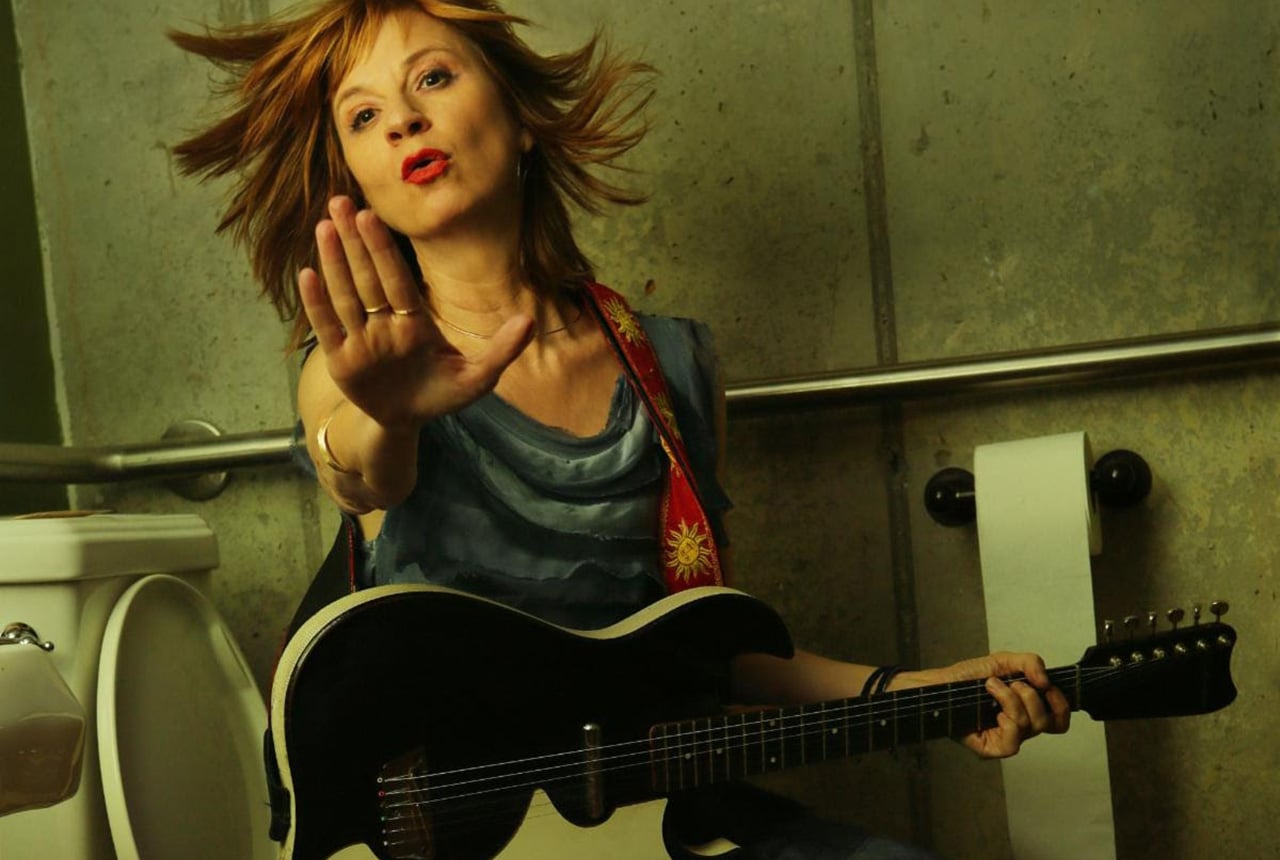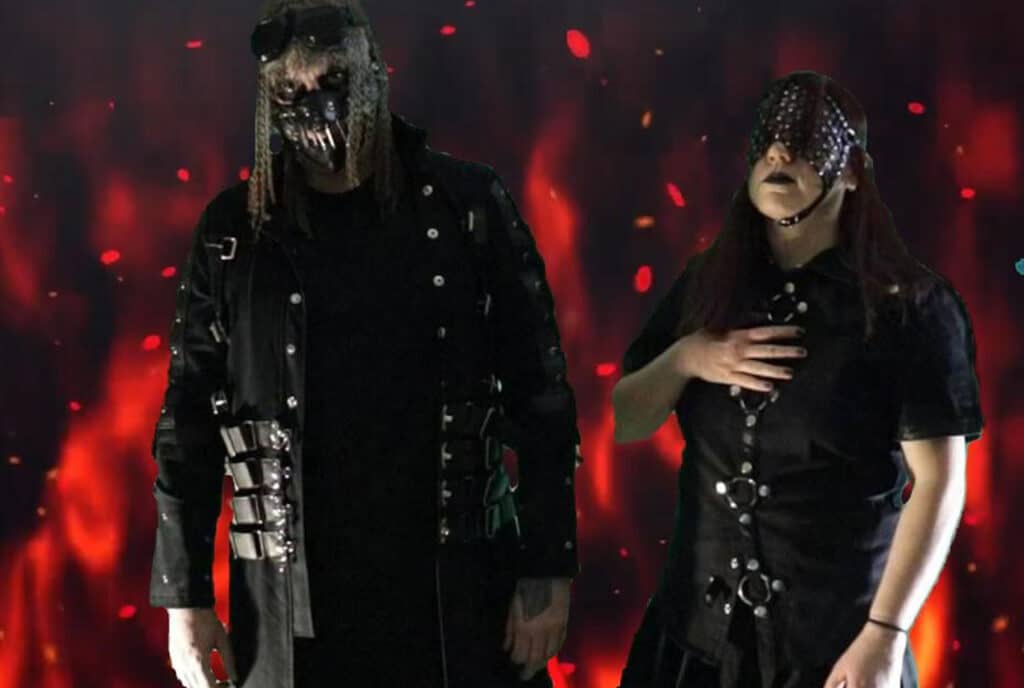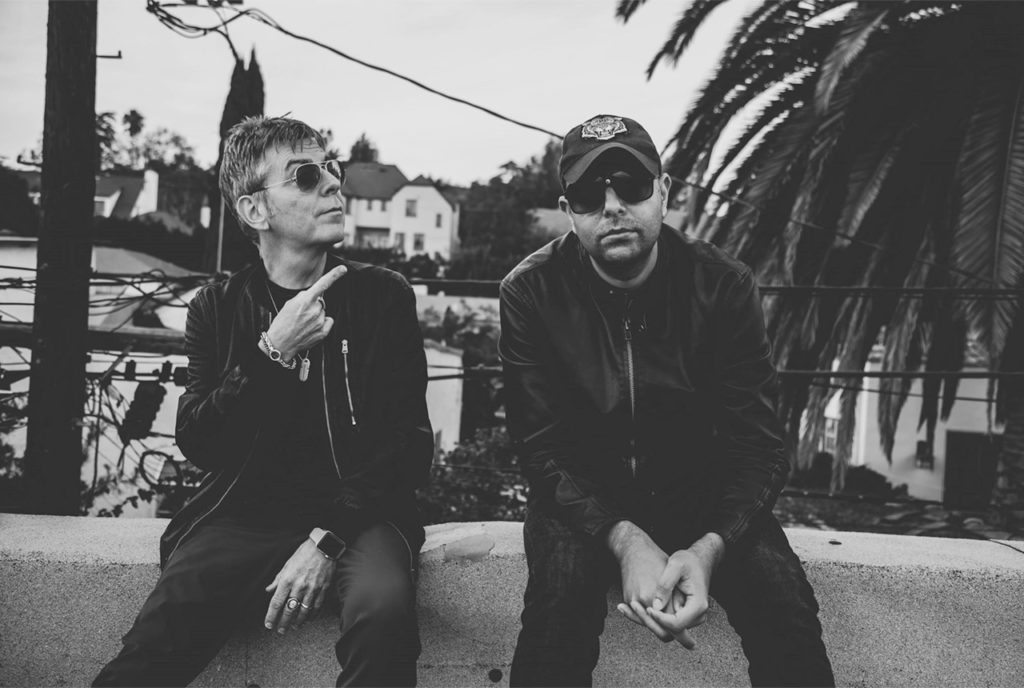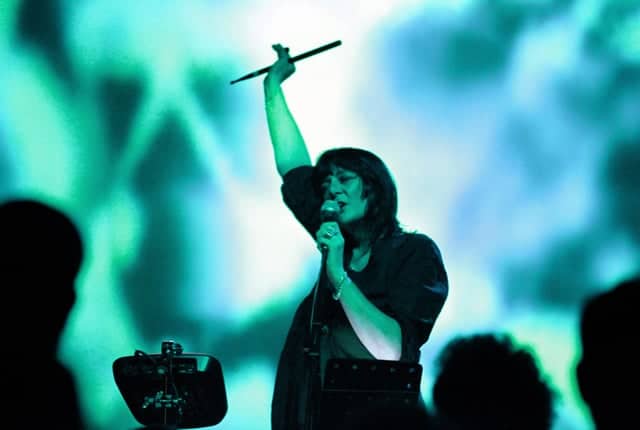With her newly released fourth album, I Hate Memory!, Eszter Balint has taken on something she had been previously hesitant to do – telling stories about her past. Born in Hungary, her parents were founding members of the experimental theater company Squat Theatre. The group relocated to New York City, placing Balint into the city’s vibrant creative community of the ‘70s and ‘80s. I Hate Memory! traces this journey, and the album is a companion piece to a stage show of the same name. The songs were co-written by Balint and Stew (Stew & The Negro Problem, Passing Strange).
Balint made her recording debut at age 15 playing the violin on a track produced by artist Jean Michel Basquiat and featuring rapper Rammellzee. Her theater experience led to many acting roles, including the films Stranger than Paradise, Trees Lounge, Shadows and Fog and The Linguini Incident (alongside David Bowie). She also guest starred in a memorable 6 episode arc of Louie.
In the following interview, Balint discusses the I Hate Memory! album and stage show.
The album draws from the live theater piece you’ve been doing. Could you discuss how the project initially came about?
Eszter Balint: So I was a big fan of Stew’s, and I saw a show of his. I don’t even remember where, maybe in Brooklyn at the Living Room or somewhere. And I went up to him just to say ‘hey.’ I’d already seen “Passing Strange” at the Public. And we knew a lot of people in common, so when I said hi to him, he said, “Are you Eszter from Squat? My God, Let’s do something,” which is exactly what I was hoping he would say. So it was like he read my mind, because I just loved his sensibility so much, and I felt like an aesthetic kinship or resonance there. So we got together soon thereafter and started talking. And he said, “Well, you must have had people ask. You must have thought about this. I’m sorry to say the most obvious thing, but have you ever thought about doing something about your life growing up in New York in the downtown community?” I said, “People have asked me about that. They’ve even asked me if I wanted to write a book about it. But I’ve never actually thought about doing something about myself like that, because it’s so unnatural for me to bring myself to the fore in that way. It’s just not really the way I’m wired.” And he really encouraged me to face those demons or whatever, because he said, “These are important stories. And there’s so much interest in that era.” And I said to him, “Well, yeah, but I’m not like that romantic about the past. I kind of don’t love nostalgia.” And he said, “That is exactly why you should be the person to do it.”
So that was that. He convinced me, and we started having conversations. And just around the conversations, certain memories and episodes and visual vignettes popped up in my mind that I felt were strong for song material. So we wrote a bunch of songs together and then I took on the rest of the show. I did a lot of writing there. In the live show, there’s a lot more text and sorts of scenes and sorts of monologues, but not in an obvious way.
I’m curious about what the process was like. Did you decide what stories you wanted to tell at the very beginning and then work from there? Did it evolve more organically, with additional ideas coming up as you worked on it?
Eszter Balint: Yeah, it was a mix of those things. I think it was ultimately very organic. I can be a very visual person, so I just had a couple of scenes. That is the best word I can use in my head about strong moments, that had a strong emotional component, usually a strong atmosphere. And as it turns out, that’s because they usually have some kind of real significance in terms of events. It was pretty organic, but then I would start writing a song, writing some words. And Stew was just a great foil for me, in terms of lyric writing. And musically, we collaborated pretty much on all the songs except for one. But I never set out to write a linear story from point A to point B. What became kind of clear as I went along was that this would be about a time period that was essentially my teenagerhood. And so that kind of revealed itself to me, that this story is also a little bit about a very unusual teenagerhood.
You mentioned being initially hesitant to write about the past and not really liking nostalgia. Did your attitude change at all once you got into it?
Eszter Balint: Yes and no. I think this whole project is, and as we do the live show, it’s still in process. And it’s still, in a way, softening a little bit about that attitude. It’s okay to look at certain things and to tell some stories about myself, because these are stories that connect to others and that are important stories. And I have a particular prism through which I witnessed and participated in these events, so it’s hopefully a unique point of view. But I would say I still have a healthy, and sometimes maybe more than healthy, resistance to romanticizing the past and to just wallowing in the past and to kind of frame it like a coffee-table book. I have to bring everything into the present process of creating something, which is where the songs live.
Were there any major changes when it came to doing the album? How does it compare to what you’ve done previously in the show?
Eszter Balint: Well, the album is really just focusing on the songs and not including a lot of other banter that goes on in the show, which – the show – is still very much evolving, as I said. So that’s definitely still something we’re developing with my director, Lucy Sexton. But the only difference in the album is I may have changed the order of one thing, just in terms of flow for the album. And there’s one spoken-word piece that is an important, pivotal moment in the show, that is not included on the album, because it didn’t quite fit the arc without any of the contextual stuff around it. And mostly that’s because it takes us very much out of New York, this one spoken-word piece. It’s about a performance that I was in with my father and his extended colleagues, a theater group, and we went to Iran and performed there. And so that’s a very memorable episode, but in the context of the album, it just would’ve been too out-of-context. So this ends up being very much a New York album.
Did you consider possibly putting some of the dialogue between songs to give it context?
Eszter Balint: I just wanted to focus on the music, because, to me, that’s really the essential part. Even in the live show, everything else is in support of the songs and the music. And that’s how this show started, and that’s what I go back to, and that’s how it ends. And I think I didn’t want to make it… There’s one kind of spoken-word type of piece on the album, and that’s enough. I think that the songs work on their own. And I’m even interested in how the story kind of communicates without any additional context, because I like that idea of… And even in the show, I try to keep some of the impressionistic quality of it all. I’m not really a very rigid, linear narrative kind of person.
The music seems pretty varied. To what degree did the subject matter of particular songs perhaps influence the musical styles?
Eszter Balint: I think that happened very organically. I think Stew’s influence is very much there. And really, it wasn’t a conceptual decision. It was like, “What is the mood, the vibe, the musical atmosphere and setting that serves this little snippet, this vignette, this scene the best?” So that’s how the variations came out. And some musical ideas started from me. Some started from Stew. Some really we were just in a room together, kind of playing around. I think the only song that had a kind of musical premeditated idea behind it was the song “Freaks,” which I actually wrote myself. And that one, I knew I wanted to do something that was an homage to the good funky dancing times of those days. But other than that, it just happened very organically. We worked almost without discussing it this way, as a soundtrack, like creating a cinematic soundtrack.
What are your ultimate goals for this show? Would you like to see it going?
Eszter Balint: Well, the great thing about this work is that I think it’s very flexible. So I’d love to tour it, and I think it can lend itself to touring as a song cycle without much around it. As a hybrid, smaller scale kind of performance with music at the fore, which is what we’ve been doing at Joe’s Pub. And the thing that we haven’t done yet, which we would really like to develop, is a larger-scale theatrical work in a bigger space. Not a huge space, but a space we can kind of transform a little bit more to suit the show and include more projection. We have an amazing visual artist working with us. He’s already done stuff for Joe’s Pub, but I think if we were to develop this into a larger scale theatrical work, he’d be really rolling his sleeves up and get more immersive with the projection stuff.
Were you impacted at all by COVID in terms of the development of this and what you wanted to be doing with it?
Eszter Balint: Oh yeah, very, very harshly. We were actually developing the more theatrical version of it at Dixon Place. And we had been working so hard for months and months and months with my director and then in the last month or two with the cast and the musicians. We were still rehearsing the first week of March, 2020, but with an ever-growing ominous sense that things weren’t going to necessarily go according to plan. And then the rug got pulled out and the premiere never happened. And that was incredibly hard for me, because it just was so… I had already been in process with this work for a long time with Stew, working on the songs first and writing all the text and then developing the live show. And so it felt like such an interruption of a flow. And I was devastated.
Speaking of rolling your sleeves up, that’s when I rolled my sleeves up and said, “Well, screw it. I’m just going to make a record of the songs.” And that wasn’t easy either, working in a recording studio during the pandemic, and the second wave, and the third wave and all that was incredibly difficult. There was very little momentum to rely on. Everything was super touch-and-go and took a longer time than most of my other records. But we did it. And I am so grateful to the musicians who played on it, and to the engineers who helped me. And I also, I have to say, we were really stubborn and persistent. And so that’s what happened. And now we’re back to the live show component too, so I’m super happy, because the pandemic tried to kill this project, but it didn’t.
You mentioned what you’d been working on prior to the pandemic. What was the overall timeframe? When did you initially start collaborating and working on the music?
Eszter Balint: Oh, it was a while ago now, at least five years ago, I’d say. Stew’s got his hands in a lot of different projects, and he also teaches. I was raising a kid, who’s now off to college. So it wasn’t a particularly swift process, but I had worked for a couple of years with Stew off and on these songs and making demos. And then I really got into writing a lot of words. So I got more into the “just sitting down at the computer and writing” phase of it.
For more info, visit eszterbalint.com.










